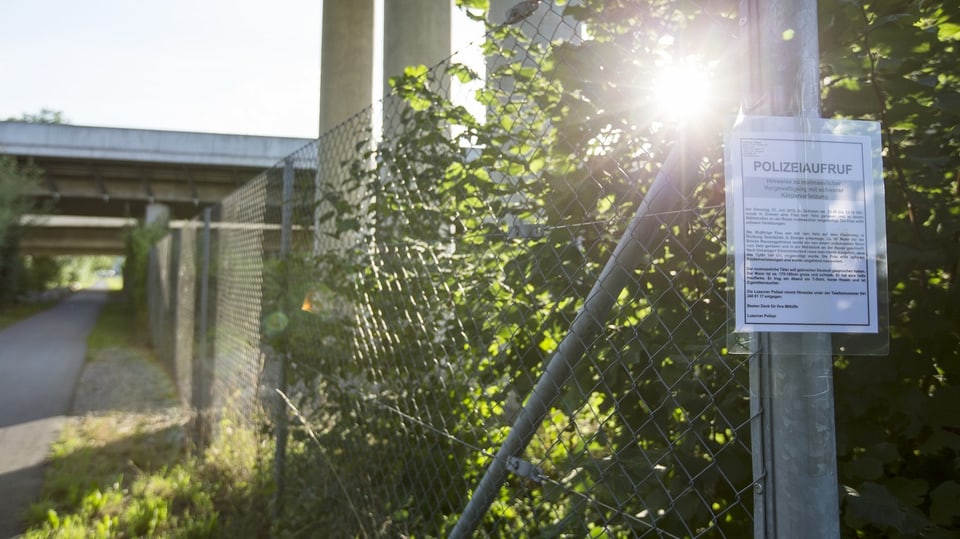- The DNA of the perpetrator in the 2015 rape case in Emmen (LU) is being evaluated.
- This is possible thanks to the revised DNA profiling law that has been in force since August 1st.
- If there are new indications, the investigations should be resumed, the Lucerne public prosecutor said at the request of SRF.
- The evaluation is carried out by the Institute for Forensic Medicine at the University of Zurich in Lucerne.
The perpetrator’s DNA is now being evaluated in detail, says Simon Kopp, communications officer at the Lucerne public prosecutor’s office, at the request of SRF. Then you have to wait and see which characteristics are reported. “If there is anything new, we will start the investigation again.” Ultimately, they want to catch the perpetrator, so Kopp.
Investigations closed in 2018
The rape case in Emmen made headlines across Switzerland in July 2015: a 26-year-old woman was torn from her bike on the Reuss and raped in a nearby wooded area – since then she has been paraplegic.
As a result, the Lucerne public prosecutor obtained DNA samples from over 370 men. The DNA of the alleged perpetrator was secured at the scene of the crime, but the investigators were not allowed to access the complete genetic information due to a lack of legal basis. The public prosecutor’s office therefore provisionally closed the investigation in 2018.
Legend:
Police call at Dammweg in Emmen: On July 21, 2015, a woman was torn from her bike and raped.
KEYSTONE/Alexandra Wey
Since August 1st, the law enforcement authorities in Switzerland have been able to use the method of DNA phenotyping with the revised law. This means that external characteristics of the person who laid the evidence, such as the color of the eyes, hair and skin, age and biogeographical origin, can be read from DNA traces from a crime scene.
According to a statement from the Federal Office of Police (Fedpol) yesterday, Wednesday, this is a milestone for the work of the police, public prosecutors and forensic medicine. The phenotyping allows the police to narrow down the group of suspects.
